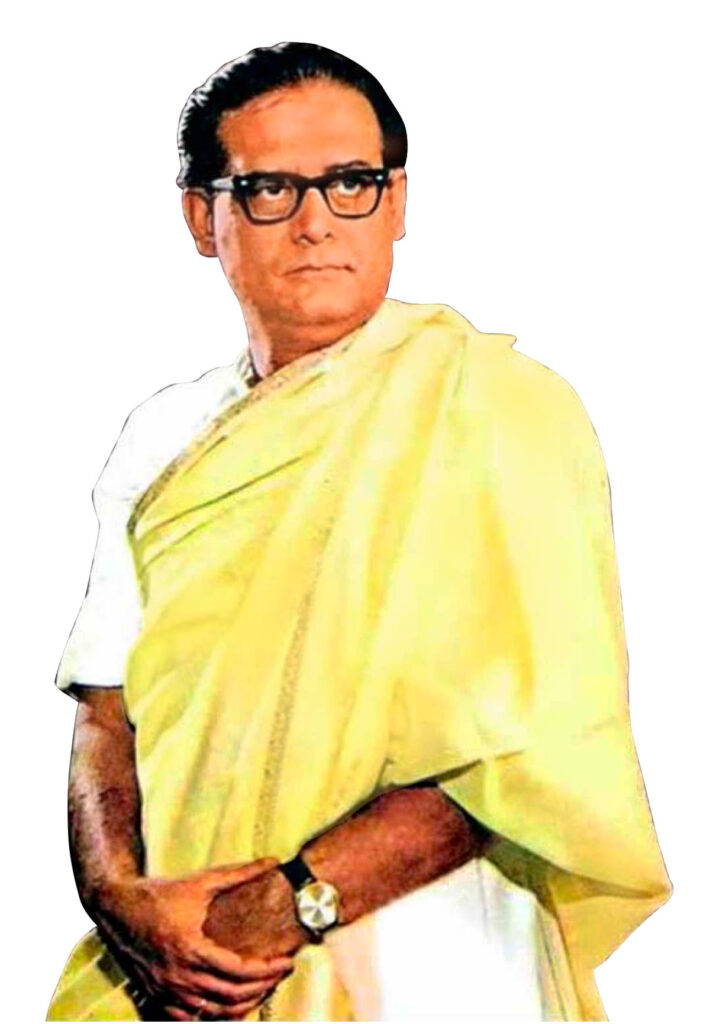Hemant: King of soft, seductive, caressing voice
He had a seductively soft and caressing voice that captivated millions all over India. But he had a special status in Bengal where he was a god-like figure. If god could sing, he would sing in Hemant Kumar’s voice, said Salil Chowdhury.
Hemant straddled both Hindi and Bengali cinema for more than three decades. A topnotch singer and a brilliantly talented composer, he sang or composed some of the best-loved songs in both languages. He boosted the careers of several Bollywood heroes such as Dev Anand, Guru Dutt, Biswajit and Dharmendra, as well as Uttam Kumar and others from Bengali cinema. During this period of frenetic activity, he also sang hundreds of non-film songs in several languages; he did live shows in Bombay, Calcutta and overseas, that drew massive crowds; he was an icon of Rabindra Sangeet and gave it a new life with one splendid album after another.
As if all this wasn’t enough, he produced several films as well, in Hindi and Bengali — of which Bees Saal Baad (1962), Kohra (1964) and Khamoshi (1968) are classics of Bollywood.
Hemant compressed 40 years of work in 20 years, his doctor said, when his crushing workload took its inevitable toll on him in later years.
Lata Mangeshkar was one of Hemant’s ardent fans. She remarked that when Hemant sang, he sounded like a sadhu at a temple singing a bhajan. No wonder Lata’s dozen-odd duets with Hemant were sheer enchantment. Just three examples:
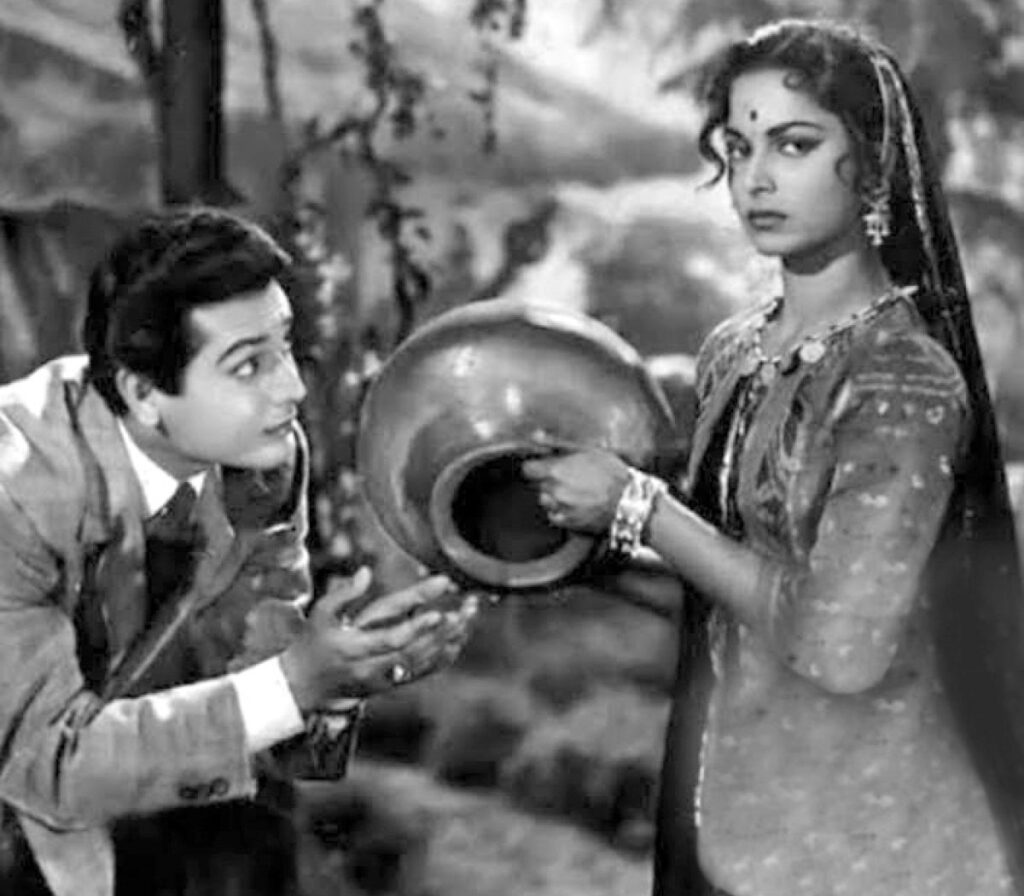
Jag dard ishq jag — Anarkali (1953). This is a song for the ages. Exquisite melody by composer C Ramchandra, and hypnotic rendering by Hemant and Lata made this song a gem. Naushad had been contracted to compose music for K Asif’s Mughal-e-Azam, based on the Anarkali theme. He worried about how he could surpass the beauty of songs like Jag dard ishq jag.
Yaad kiya dil ne kaha — Patita, 1953. A song that oozes romance! Hemant and Lata made this evergreen charmer one of the love anthems of the 1950s. Composers: Shankar-Jaikishen
Nain-se nain — Jhanak Jhanak Payal Bhaje, 1955. Hemant and Lata pour out romantic melody that matches the visual grandeur of the flowers and fountains of the Brindavan Gardens, Mysore. The song is filmed on the dancing duo Gopi Krishna and Sandhya. Composer: Vasant Desai.
In Hemant’s voice, a deep but soothing baritone, one could experience an amalgamation of Rabindra Sangeet and folk music, the best of tradition and modernity. But Hemant always played down his golden voice dismissing it as an uparwale ki den (god’s gift), says Biswajit.
Hemant’s voice was a deep but soothing baritone, an amalgamation of Rabindra Sangeet and folk music, the best of tradition and modernity.
Some great Hemant solos
- Na ye chand hoga — Shart, 1952 (Composer: Hemant Kumar)
- O chandan ka palna — Shabab, 1954 (Naushad)
- Jane woh kaise log the — Pyaasa, 1957 (S D Burman)
- Hai apna dil to awara — Solva Saal, 1958 ( S D Burman)
- Ya dil ki suno duniya walo — Anupama, 1966 (Hemant)
- Tum pukar lo tumhara intezar hai — Khamoshi, 1969 (Hemant)
Early years
Hemant Kumar was born on June 16, 1920 in Varanasi. He had three brothers and a sister. The family moved to Kolkata when he was young. His interest in music began early — he was just 13 when he sang his first song on All India Radio in 1933.
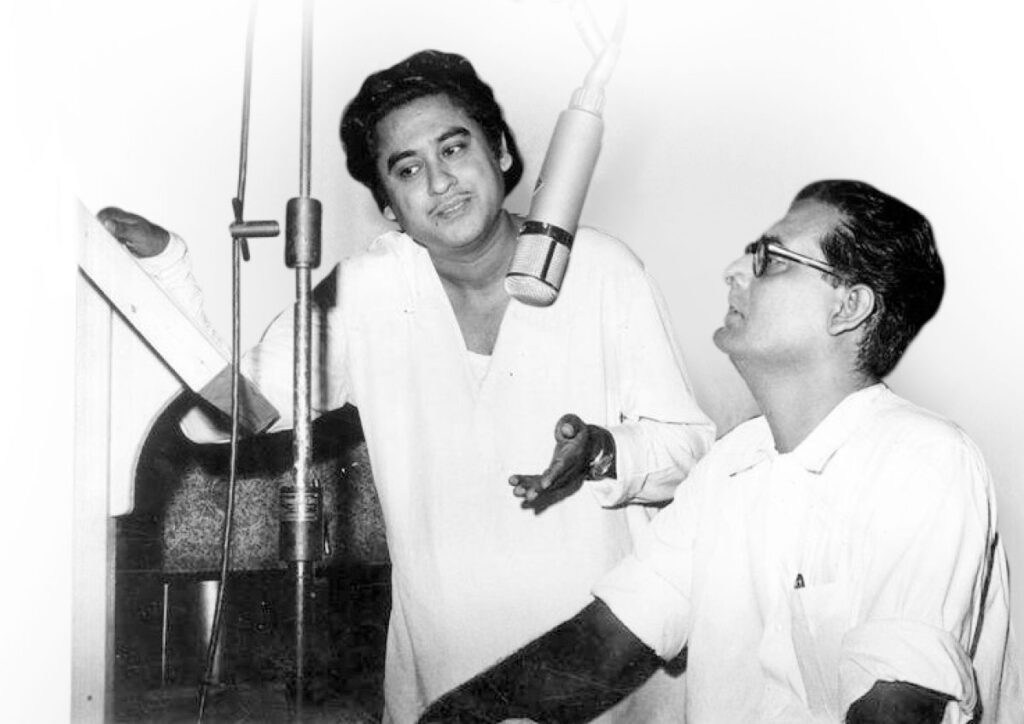
He tried to study engineering at Jadavpur University, but his heart wasn’t in the course and he gave it up after a year. He learned from a couple of music gurus and received training in Rabindra Sangeet from the great Faiyaz Khan, till the latter’s death in 1950. His first playback song was for the Bengali film Nemai Sanyas in 1937. He also served as music director for the Bengali film Abhiyatri in 1947.
The early 1940s were a tumultuous period in Indian history. The great Bengal famine of 1943 killed three million people, but the colonial government’s attitude to this colossal human tragedy was callous. Hemant joined the Indian People’s Theatre Association (IPTA), which tried to raise political awareness through works of art.
In 1947, Hemant recorded a non-film song called Ganyer badhu (The rural bride) that had music and lyrics by Salil Chowdhury. The six-minute song was about how an idyllic rural woman’s life was ravaged by famine and poverty. The raging popularity of the song made Hemant and Salil famous names in eastern India. The two paired again in many songs over the next few years, most of which were hits.
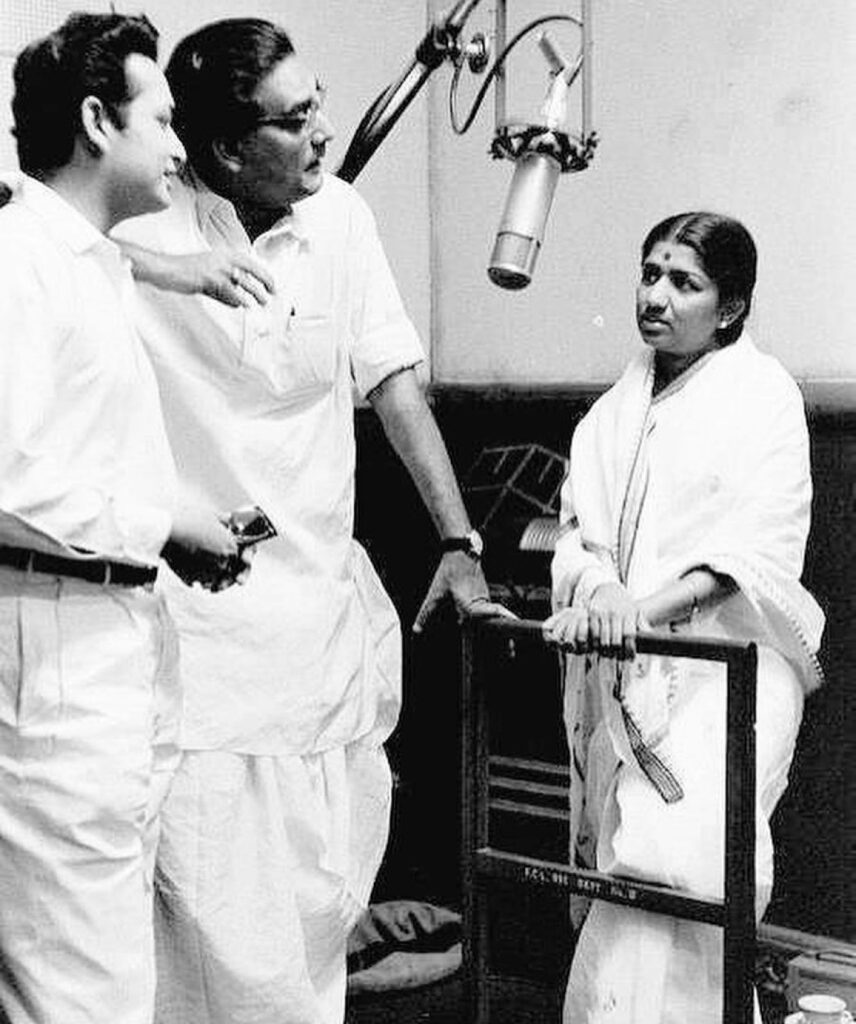
Hemant moved to Bombay in 1951. He was invited by Filmistan boss S Mukerjee to direct music for his first Hindi Film Anand Math (1952). It left its mark in history with Bollywood’s best patriotic song, Vande Mataram, sung by Lata Mangeshkar. The song owed its eternal appeal to Hemant’s arresting melody, superb picturisation, and exceptional rendering by Lata. But the film was not commercially successful.
However, Hemant won further success as singer. In Jaal (1952), his song Yeh raat, yeh chandni phir kahan was a masterpiece. The next year, Shankar-Jaikishen engaged Hemant for the song Yaad kiya dil ne kahan ho tum in Patita, one of Bollywood’s iconic songs of romance. And C Ramachandra’s baton created outstanding music for the phenomenal Anarkali the same year. Hemant’s duet with Lata, Jaag dard ishq jaag, was magical.
Hemant’s second film as composer for Filmistan, Shart (1954), failed to ignite the box office, though two romantic songs in it were thumping hits — Na ye chand hoga, sung separately by Hemant and Geeta Dutt, and Dekho woh chand chupke karta hai kya ishare (Hemant and Lata). The moon shone bright in Hemant songs!
Disappointed by his commercial failure as a music director, Hemant decided to return to Kolkata. But S Mukerjee stopped him, Bollywood-style, at the Bombay railway station.
But Hemant was disappointed by his commercial failure as a music director and decided to return to Kolkata. But S Mukerjee stopped him, Bollywood-style, at the Bombay railway station. “Give me a hit film first before you leave,” he said.
The hit film did happen: the 1954 Nagin rocketed Hemant to the pinnacle of popularity. The snake charmer song Man dole mera tan dole (filmed on Vyjayantimala in Lata’s voice) mesmerised audiences. It was claimed that snakes entered cinema halls and residences when the song played! The sound of the been in a few Nagin songs was simulated by two Hemant assistants (Kalyanji, who played the clavioline, and Ravi the harmonium). Both of them became noted music directors themselves. Thus Hemant introduced electronics to Bollywood music. Other Nagin songs were hits too. Hemant won the 1955 Filmfare best music director award for Nagin.
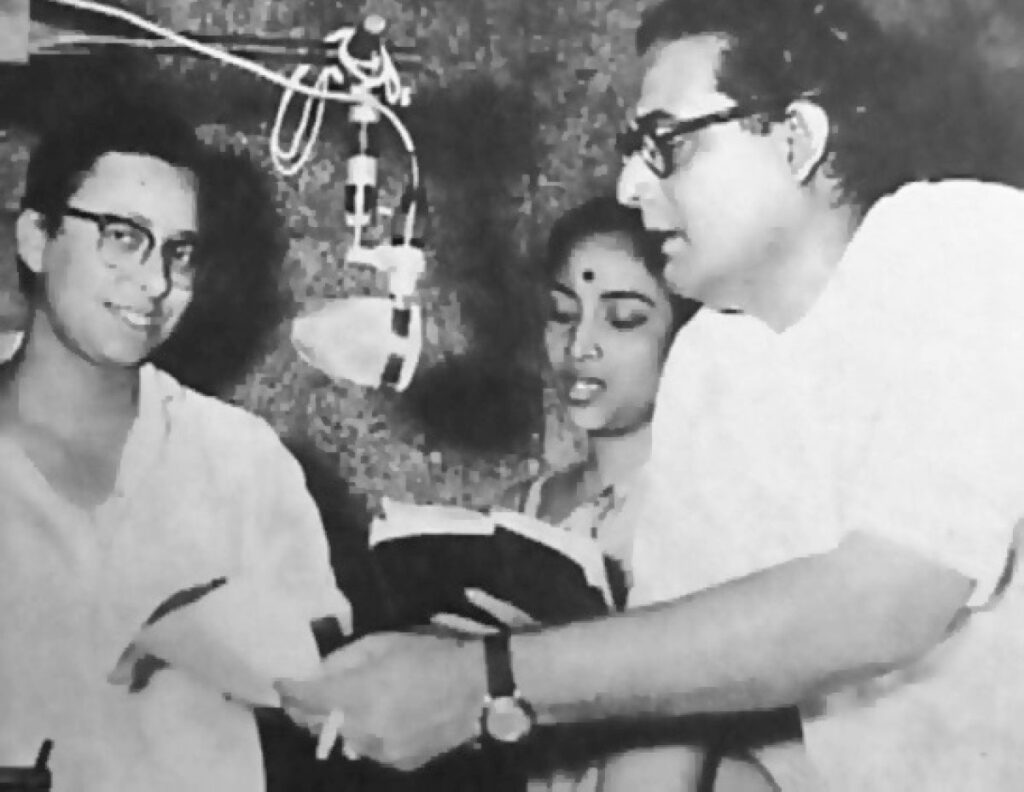
Hemant gave expression to his patriotic bent once more in 1954, as composer for the film Jagriti, whose patriotic songs Aao bacchon tumhe dikhaye (sung by Kavi Pradeep, who was also the film’s lyricist) and Hum laayen hain toofan se (sung by Rafi) became classics. Jagriti won the Filmfare best film award in 1956.
Hemant was often Dev Anand’s voice — he sang 11 songs for him, many of which were hits. After Hemant recorded the song Na tum hamey jano for Baat Ek Raat Ki (1962), Dev Anand embraced Hemant, saying “You have given my romanticism a new dimension.”
The most prolific phase in Hemant’s career was from the mid-50s, when he saw all-round success for some 15 years — and failures as well. He did shows overseas — to ecstatic audiences in Trinidad, Tobago, Fiji and Suriname. He became a producer, launching Hemanta-Bela productions. His very first film (the Bengali Neel Akshar Neechey, directed by Mrinal Sen) won the President’s Award for best film of the year. He went on to produce several Hindi movies under the banner of Geetanjali productions, for all of which he composed music as well.
Of these films, Bees Saal Baad (1962) was a hit, Kohra (1964) and Khamoshi (1968) were moderately successful. But all three yielded some memorable songs. Lata’s Kahin deep jale kahin dil (Bees Saal Baad) won her the Filmfare award for best singer.
Incidentally, it was her first song after a three-month break caused by a mysterious attack of food poisoning. Hemant was a wonderful source of support during this critical period, said Lata.
Kohra presented one of Hemant Kumar’s gems, Yeh nayan dare dare. Kishore sung the pathos-filled Woh shaam kuch ajeeb thi in Khamoshi (1969). The same film featured Tum pukar lo, one of Hemant’s most haunting solos.
The crowning glory of Hemant’s composing career was his music for Guru Dutt’s 1962 film Sahib Bibi aur Ghulam. Hemant used all of his knowhow and experience to craft seven emotional stunners rendered by Asha Bhosle and Geeta Dutt — from Bhanwara bada naadan hai (Asha) to Na jao saiyan chhuda ke baiyan (Geeta).
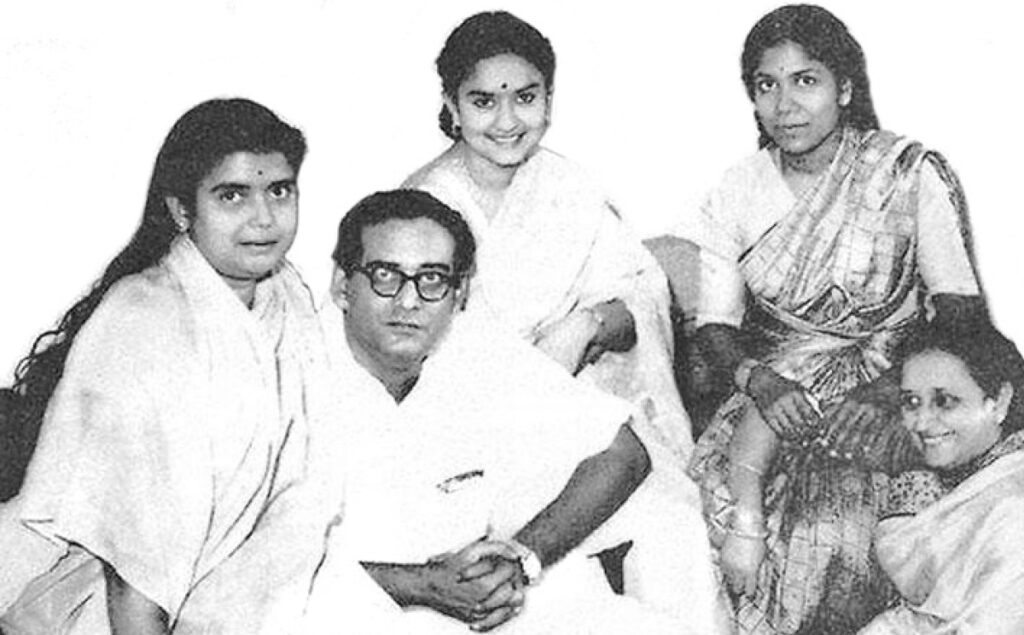
In the 1960s, Hemant was insanely busy — as singer, composer and producer in Hindi and Bengali films, besides music shows aplenty. Many shows began late in the evening; Hemant was the last singer, his turn came at 5am! Gramophone Company of India put together a collection of Hemant’s songs on Tagore — it was a sensation. Almost throughout this decade, Hemant would fly from Bombay to Calcutta in the evening and fly back to Bombay the next evening. In fact, Indian Airlines gave him a best passenger award. It was a Bombay-Calcutta return ticket for two!
Such work and travel schedules — which meant little sleep, poor food and stress —- wreaked havoc on his health. He was already suffering from diabetes and blood pressure and spinal problems. Being a heavy smoker — he smoked 60 Marlboro cigarettes a day — didn’t help. He said his vocal chords worked best after a smoke! But he did slow down during the 1970s.
Hemant received several honours, including Filmfare and national awards and several from the Bengal Film Journalists Association. In the 1970s he turned down a government offer of a Padma Shri, saying it had come too late. It is said that during the 1980s, he was sounded for a Padma Bhushan Award, but he didn’t express interest. He passed away in 1989, after a heart attack following a visit to Bangladesh. “Rabindra Sangeet has died,” exclaimed Satyajit Ray.
Hemant Kumar was a towering figure of cinema — and not just because he stood 6’3” tall. His intrinsic goodness was as exceptional as his music. He was generous with colleagues and friends, even strangers. Many acts of philanthropy came to light after his death. No wonder he inspired the kind of adoration that few enjoy.
Editor’s pick
- Ya dil ki suno duniyawalo (Anupama)
- Na yeh chand hoga, na tarey rahenge (Shart)
- Yeh raat yeh chandni phir kaha (Jaal)
- Jaag dard-e isq jaag (Anarkali)
- Saanwley salone aaye din bahar ke (Ek hi raasta)
The author is a senior journalist and a member of the Rotary Club of Madras South

